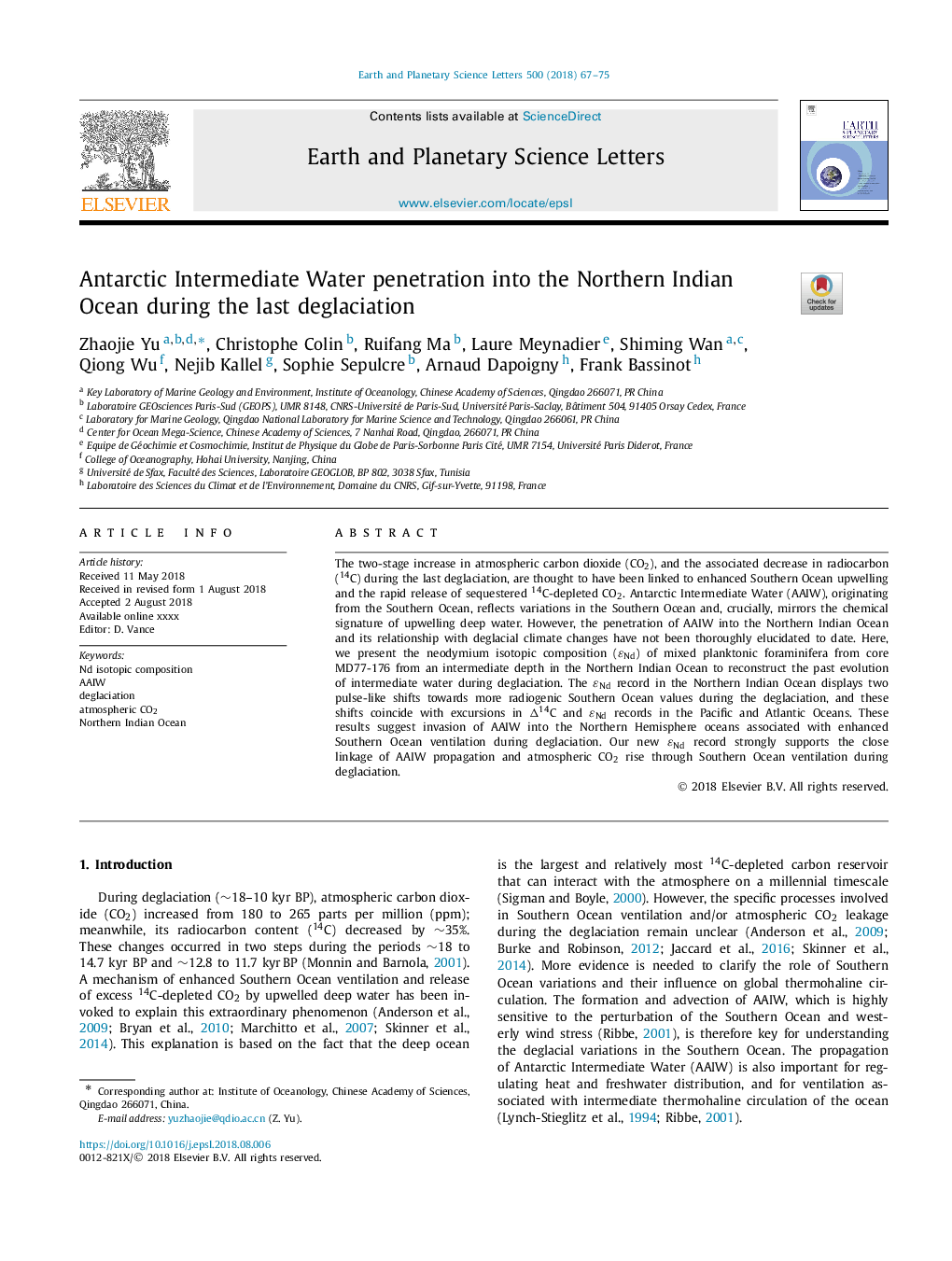| Article ID | Journal | Published Year | Pages | File Type |
|---|---|---|---|---|
| 8906655 | Earth and Planetary Science Letters | 2018 | 9 Pages |
Abstract
The two-stage increase in atmospheric carbon dioxide (CO2), and the associated decrease in radiocarbon (14C) during the last deglaciation, are thought to have been linked to enhanced Southern Ocean upwelling and the rapid release of sequestered 14C-depleted CO2. Antarctic Intermediate Water (AAIW), originating from the Southern Ocean, reflects variations in the Southern Ocean and, crucially, mirrors the chemical signature of upwelling deep water. However, the penetration of AAIW into the Northern Indian Ocean and its relationship with deglacial climate changes have not been thoroughly elucidated to date. Here, we present the neodymium isotopic composition (εNd) of mixed planktonic foraminifera from core MD77-176 from an intermediate depth in the Northern Indian Ocean to reconstruct the past evolution of intermediate water during deglaciation. The εNd record in the Northern Indian Ocean displays two pulse-like shifts towards more radiogenic Southern Ocean values during the deglaciation, and these shifts coincide with excursions in Î14C and εNd records in the Pacific and Atlantic Oceans. These results suggest invasion of AAIW into the Northern Hemisphere oceans associated with enhanced Southern Ocean ventilation during deglaciation. Our new εNd record strongly supports the close linkage of AAIW propagation and atmospheric CO2 rise through Southern Ocean ventilation during deglaciation.
Related Topics
Physical Sciences and Engineering
Earth and Planetary Sciences
Earth and Planetary Sciences (General)
Authors
Zhaojie Yu, Christophe Colin, Ruifang Ma, Laure Meynadier, Shiming Wan, Qiong Wu, Nejib Kallel, Sophie Sepulcre, Arnaud Dapoigny, Frank Bassinot,
